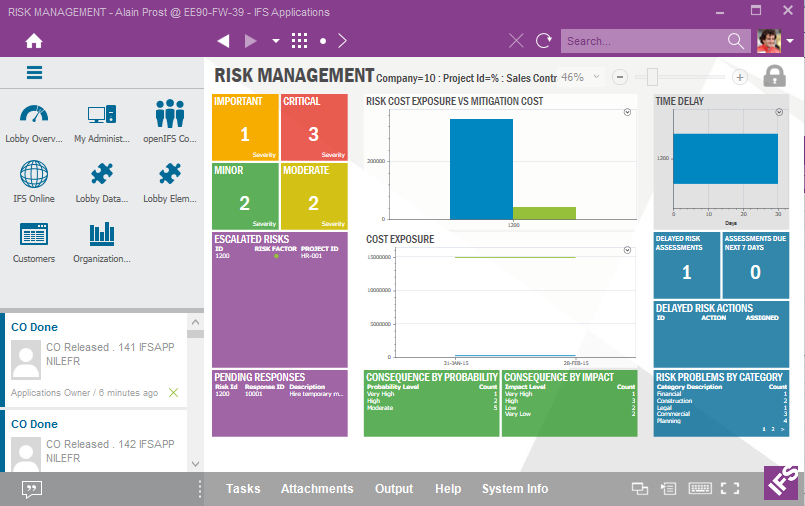| Foundation1 / Overview / User Interface / |
Historically, user interface design has had a technological premise. The interface was designed to work on a particular type of terminal rather supporting the way a user would work. IFS believes that rather than adapting the human to the tool, the tools should be designed to suit human needs.
Creating a good user interface requires design processes that are driven by the task, role, and environment. A good user interface for data entry is different from one for planning or analysis. What works well for engineers in the office might not work at all for technicians in the field. Relying on a single user interface technology for all tasks, roles, and purposes is an outdated principle that does not put the needs of the users first.
Since the 1980s, applications have transitioned from green-screen, through Windows interfaces, to a combination of Windows, web/portal, and mobile clients. This increasing diversity of user interfaces will continue, allowing more people to use applications in more places and on more occasions, and using new devices and terminals. For enterprises and business application software, this translates into more value and utility from the same application.
IFS Service-Oriented Component Architecture makes it cost-efficient for IFS to provide a complete set of user interface technologies that suit different users, tasks, roles, and environments. The openness of the architecture also makes it easier to create and integrate other interfaces.
IFS Enterprise Explorer is the intuitive, effective, and productive user interface for IFS Applications. It is a rich, web-deployed interface that will work alongside and in synergy with the existing web portal and mobile client interfaces. IFS Enterprise Explorer is about:
IFS Enterprise Explorer is designed with both novice users and experienced super users in mind, and on the principle of “less is more”. This allows new users to quickly orientate themselves, and experiences users to discover additional features. Based on the familiar principles of a web browser navigation in IFS Enterprise Explorer is intuitive, but also powerful with features like Lobby, shortcuts, navigator filter, breadcrumbs, and visual recent screens. Finding information is easy and fast thanks to Google style keyword searching and with a search dialog that automatically configures itself based on the users behavior. New innovations like streams, rich media notes and a built in task handling system facilitate collaboration in context and information sharing between employees.
IFS Enterprise Explorer is deployed to, and run from, the web. It is efficient over wide area networks with a low bandwidth usage and a high tolerance towards network latency. It is also suitable for remote workers, using it from home broadband, public hotspots, and remote locations.

IFS Mobile Client runs inside a J2ME container on multiple types of devices. Transactions are sent encrypted over any network link directly to the services layer in IFS Applications.